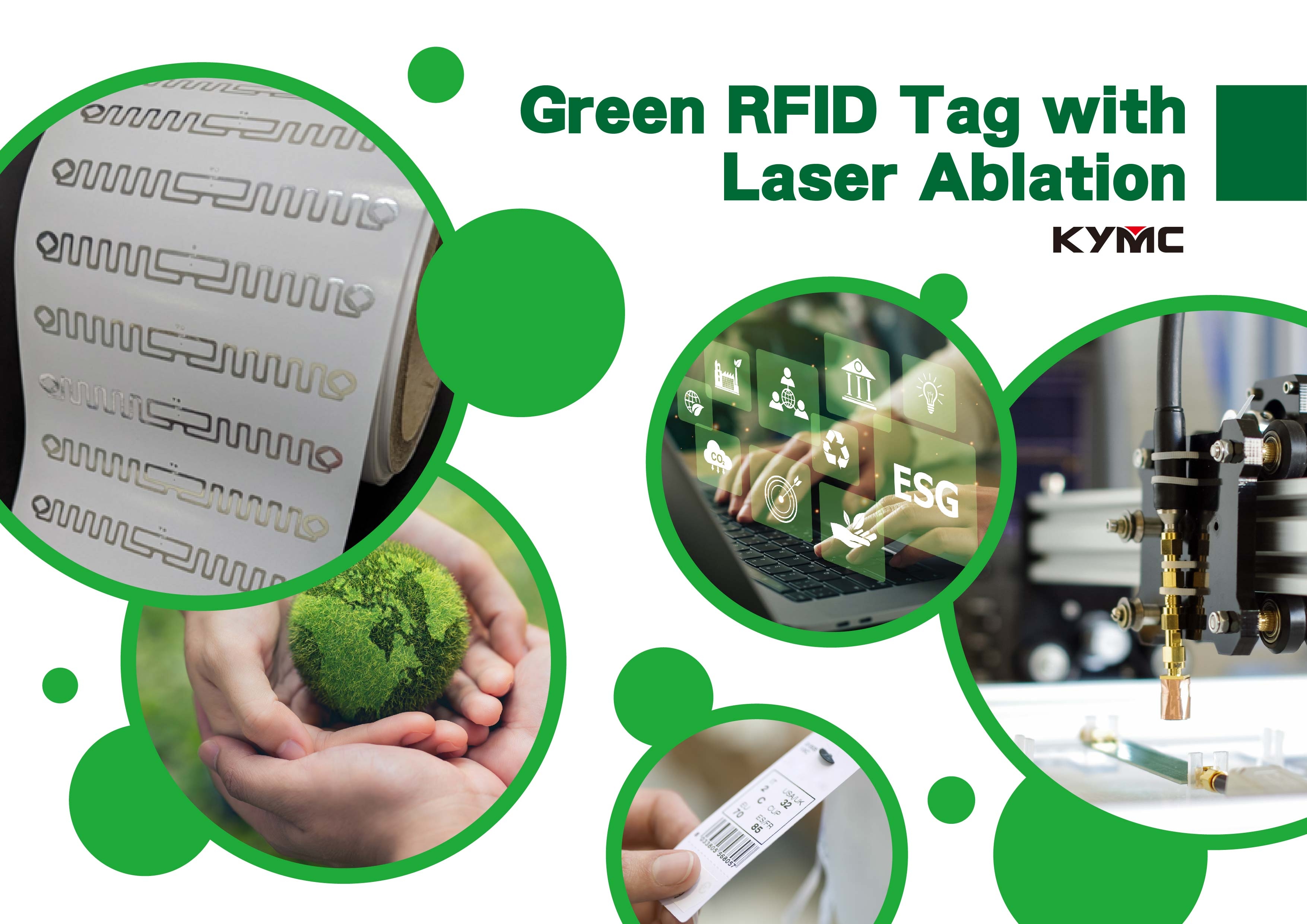Green RFID tags with laser ablation

RFID tags play an important role when it comes to tracking and obtaining information about a product. That’s why global brands like UNIQLO, Decathlon, and Zara have fully adopted the RFID tag into the price tag system for their products. As ESG factors become increasingly important for companies in the marketplace, companies are looking for greener ways to produce RFID tags. The need for green tags is on the rise. There are mainly two places in the RFID production process that we can alter to make it greener. One area is to alter the selection of substrate that the aluminum antenna sits on, and the other area is to alter the way how the antenna (RFID dry inlay) is manufactured.
Selection of substrate
Traditionally PET serves as the base substrate for the RFID antenna. However, more and more companies are switching over to paper instead for a greener process. When a paper substrate is used instead of a PET film substrate for a million standard size RFID tags with a dimension of 80 mm x 45 mm, the consumption of plastic resin can be reduced by approximately 110 kilograms. PET based RFID has its history due to its mass production process of etching, its good mechanical strength, and its cost aspects. However, as attention to the environment takes over, Paper based RFID antennas tags that is economical, good in printing and most importantly eco friendly is expected to take over, especially for the European market.
The patterning process of RFID tag antennas (RFID dry inlays)
Conventionally the aluminum etching process is adopted when it comes to patterning the antenna. The etching process involves washing the combined composite aluminum foil in chemicals and removing the printing ink on the surface of the aluminum antenna after etching. This process is slow, wastes many materials, pollutes the environment, and is limited in its pattern accuracy. Another process for the patterning process is through rotary die cutting, where composite materials are cut out through the pre-designed pattern of the die-cutting knife. This process is less flexible in producing different RFID antenna patterns. The future of RFID tag antenna patterning process is expected to be the laser ablation process. The laser ablation process is an eco-friendly process, at the same time flexible for producing different patterns and is fast in its production.
KYMC and its technology partner Laser Mechanisms Taiwan Ltd. have together developed a production method that integrates different manufacturing process. This includes the integration of flexographic coating, lamination, and laser ablation. This production method adopts a paper-based substrate to get away from plastic usage and uses laser ablation instead of chemical etching to achieve a flexible and eco-friendly process. When it comes to laser ablation, fiber laser has been adopted for a more accurate cutting process when compared to CO2 laser. This contributes to the cost reduction because finer patterning could be achieved and tinier chips could be used. Below is a comparison chart between fiber laser and CO2 laser.
|
|
Fiber laser |
CO2 laser |
|
Laser wavelength |
780 nm~2000 nm |
10600 nm |
|
Suitable processing material |
Mainly metal materials |
Mainly non-metal materials |
|
Cutting accuracy |
Suitable for fine pattern fabrication (ex. <100㎛ channel width patterns) |
Not suitable for fine pattern fabrication |
The success of the new developed machine for this unique manufacturing process relies on five key technologies:
1. High precision flexographic coating technology
2. High precision laser ablation technology
3. High registration accuracy for flexographic coating and laser ablation
4. Substrate selection and manipulation
5. Drying and curing technology
This unique developed machine can be adopted not only for manufacturing RFID antenna (dry inlays). This process can also be adjusted and applied to smart tags, flexible electronics, and flexible circuit board production. Contact a KYMC sales representative now to discuss your requirements.


























